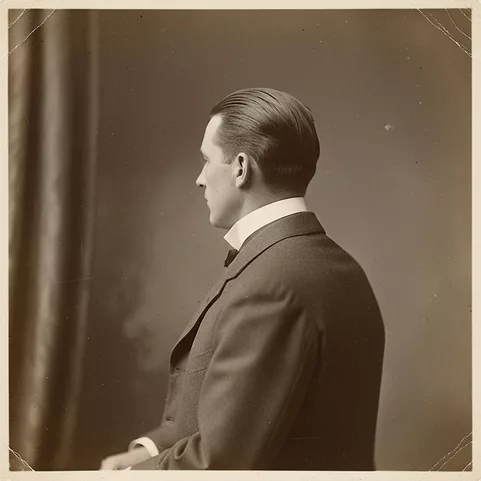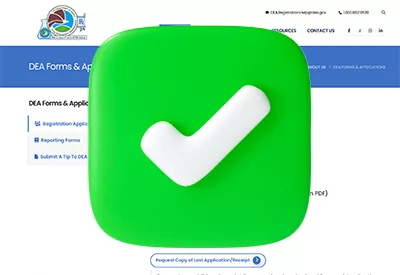Supporting Sobriety With 12-Step Facilitation

Joseph Nowinski, PhD is assistant professor, Hazelden Betty Ford Graduate School, Center City, MN.
Dr. Nowinski has authored and receives royalties for books and online trainings on twelve-step facilitation published through Hazelden Publishing. Relevant financial relationships have been mitigated.
CATR: You are the original developer of 12-step facilitation (TSF) as a treatment modality. What led you to develop TSF?
Dr. Nowinski: That goes back to my time working in an early psychotherapy study called Project MATCH (Project MATCH, Alcohol Clin Exp Res 1993;17(6):1130–1145). Our goal was to compare different psychotherapies head-to-head for the treatment of alcohol use disorder (AUD). The idea was to have one of those treatments be a 12-step program, specifically Alcoholics Anonymous (AA). Part of my role was study design, and I noticed an interesting trend—AA seemed to be a good treatment when patients engaged, but the dropout rate was very high. I thought that we might be able to improve outcomes in the 12-step arm if we could just have better treatment adherence. And that is how TSF came to be developed. The idea was to provide clinicians with a framework to, as the name implies, facilitate engagement with 12-step programs.
CATR: And what exactly is TSF?
Dr. Nowinski: At its heart, TSF consists of a core program, which is a series of essential topics that we recommend all patients engage with. Clinicians and patients work through modules on a weekly basis that are designed to educate the patient on different aspects of 12-step programs, along with tasks to be done between sessions. This is complemented by an elective program of additional optional topics that therapists can choose to use, or not, with individual clients. TSF is, by design, a flexible framework that clinicians can utilize to aid their patients in engaging with and getting the most out of 12-step programs like AA.
CATR: So, 12-step programs and TSF are not the same thing, but one is designed to optimize the other.
Dr. Nowinski: Yes, that is exactly it. And the two are not done sequentially. Rather, they’re done in parallel. The therapist, also called the facilitator, encourages the patient to go to an AA meeting after the very first TSF session. And though it is manualized, TSF is not a one-size-fits-all approach. It maintains flexibility, just as AA does. I think it’s this flexibility that contributes to its effectiveness.
CATR: What is the evidence behind TSF, and how does it compare to other treatment modalities?
Dr. Nowinski: The best evidence to date comes from a 2020 meta-analysis of 27 RCTs involving over 10,000 participants. They concluded that TSF was superior to other treatments such as cognitive behavioral therapy (CBT) and motivational enhancement therapy for AUD treatment in promoting continuous abstinence and percentage of abstinent days out to three years (Kelly JF et al, Cochrane Database Syst Rev 2020;3(3):CD012880).
CATR: Has TSF been studied for substance use disorders (SUDs) other than AUD?
Dr. Nowinski: It has, though its use in AUD is by far the best studied. There is some work to support efficacy for the treatment of cocaine and opioid use disorders as well, though a lot of work remains to be done outside of alcohol (Carroll KM et al, Drug Alcohol Depend 2012;126(1–2):224–231).
CATR: Which patients are best suited for TSF?
Dr. Nowinski: Early investigations of TSF predated the DSM-5, so researchers used DSM-IV definitions of alcohol abuse and alcohol dependence. The initial hypothesis was that TSF would be effective for those with more severe disorders—that is, alcohol dependence but not alcohol abuse. However, the study showed that TSF worked equally well for both diagnoses. At this point, I would say that TSF is appropriate for individuals who qualify for a diagnosis of a moderate to severe AUD and who have not experienced success in moderating their use.
CATR: And that is in keeping with the DSM-5, which condensed alcohol abuse and alcohol dependence into a single diagnosis of AUD.
Dr. Nowinski: Right. As I see it, the change captures the fact that alcohol use lies along a spectrum. We’re learning more and more that even very low levels of drinking don’t have the health benefits we once thought they did (Biddinger KJ, JAMA Netw Open 2022;5(3):e223849). So, you have infrequent drinking on one end of the spectrum, and in some people, that progresses to more regular drinking. That can progress further to regularly drinking larger amounts, which is when negative consequences can start developing, and if drinking continues, then the patient starts meeting criteria for AUD. And that’s where the DSM-5 spectrum of three AUD categories comes in: mild, moderate, and severe. It seems that as long as the patient meets AUD criteria anywhere along that severity spectrum, TSF can be helpful.
“Encourage patients to attend AA meetings in between 12-step facilitation sessions by assigning attendance as a recovery task. Inquire about their progress and address challenges and any questions that came up. This process fosters a therapeutic work ethic, where clients become accustomed to being asked to engage in recovery tasks.”
Joseph Nowinski, PhD
CATR: What happens during TSF sessions? What is the facilitator doing?
Dr. Nowinski: The facilitator follows a manual-guided approach. Remember, TSF was born out of research showing that many people drop out of 12-step programs without clear reasons. The purpose of the facilitator is to act as a coach during sessions. By using the guide, facilitators help individuals understand AA and how best to engage with it. They introduce clients to the core concepts of the 12 steps, beginning at the same place that AA does: acceptance. Acceptance entails a person coming to terms with the fact that they have lost control over their drug or alcohol use. Early on, the core program also encourages individuals to seek help rather than attempting to manage their addiction alone. Many believe they can handle it themselves, but the essence of programs like AA is fostering connections with others. Sobriety begins with acknowledging the problem and recognizing the need for support.
CATR: You mentioned that the facilitator encourages patients to attend AA meetings in between TSF sessions.
Dr. Nowinski: Yes, assigning what we call recovery tasks, activities to be done between sessions, is a necessary part of TSF. As I said, attending an AA meeting is a recovery task after the very first session. Follow-up on each of these recovery tasks is essential, too. When clients return, the facilitator should inquire about their progress, address challenges that arose, and answer any questions that came up. This process fosters a therapeutic work ethic, where clients become accustomed to engaging in recovery tasks and each session addresses issues that come up in real time.
CATR: Can you elaborate on the structure and components of the TSF program?
Dr. Nowinski: As I said, there is a core program and an elective program. The core program provides education and mirrors many of the teachings of AA. For example, as I mentioned, it starts with the concept of acceptance, which is a recognition that efforts to stop or moderate use have not been successful and that a better option is to pursue a sober lifestyle. The components of the core program extend from there, proceeding to a belief that it is possible to pursue sobriety, followed by a willingness to reach out to others who share that goal.
CATR: And what about the elective program?
Dr. Nowinski: This dives into some other more advanced topics, some of which will be helpful for a given patient, while others might not be. Facilitators are free to implement whatever portions they feel would be helpful. I encourage providers to explore the elective program, though, which I think contains some tools that can be powerful. For example, it includes a section on family history in which the facilitator and patient collaborate on constructing a genogram that traces alcohol use throughout family members. Participants often discover a history of alcohol use in their families that clarifies the genetic component of AUD for them.
CATR: What are some other topics in the elective program?
Dr. Nowinski: Another elective topic addresses enabling behaviors. These are behaviors of family members or partners that inadvertently support continued drinking. Digging into these relational patterns can elucidate all sorts of dynamics that may contribute to ongoing alcohol use. Often, patients aren’t consciously aware of enabling behaviors until they are discussed in the context of TSF sessions. Spirituality is another focus, which can be helpful for many patients. Research indicates that engaging in spiritual activities—like meditation, prayer, or connecting with nature—supports sobriety (Carroll S, J Studies Alcoholism 1993;54:297–301). Finally, I’ll highlight the portion about lifestyle. We’ve all heard the saying, “Abstinence is not drinking; sobriety is a lifestyle.” Activities such as visiting art museums, hiking, or community service can enhance a sober lifestyle. The facilitator may encourage participants to expand their lifestyle by exploring nature or cultural activities, all of which can bolster their recovery.
CATR: What is the typical duration of a TSF treatment course?
Dr. Nowinski: It was originally designed to be 12 sessions, delivered weekly. But that was just how it was designed to be delivered in the confines of a research study; it needed to be standardized. Really, it’s supposed to be flexible—facilitators can speed up some portions or slow down others depending on how the patient is doing. There are also protocols for TSF to be delivered in group settings. Usually, the groups proceed a bit slower, especially for topics like spirituality or genograms; they may not get to everybody in the group in a single session. I think the slower speed can be advantageous because it allows for topics to really sink in.
CATR: Can TSF be combined with other treatment modalities?
Dr. Nowinski: I don’t think there would be any conflict in combining TSF sessions with, say, motivational interviewing (MI) or CBT. I don’t know that this question has been investigated specifically, so it’s tough to say what the efficacy would be when treatments are combined. Would they be additive or something intermediate? But you could easily imagine incorporating some MI-consistent techniques into the TSF work. For example, a facilitator might ask at the end of a session, “Given everything we’ve been discussing, on a scale of 0 to 10, how important is it for you to maintain your sobriety?” That’s a well-known MI technique that could be incorporated rather easily. And there is no conflict with using medication either. Patients receiving TSF can be on medications for AUD such as naltrexone or acamprosate, as well as medication for comorbid conditions such as depression or anxiety. Not only is there no conflict, but I recommend encouraging patients to continue taking these medications if they find it helpful.
CATR: You mentioned the flexibility of TSF. Why do you think that’s important?
Dr. Nowinski: Substance use always has been, and always will be, affected by environment, society, and current events. These things evolve in unpredictable ways. The COVID pandemic is a good example. We saw levels of substance use go up during the pandemic, as well as increases in other mental health disorders (Czeisler ME et al, MMWR 2020;69(32):1049–1057). On the other hand, we saw an expansion and diversification of AA options. This was a positive development, but again, it was not something that we could have foreseen. In just a few years, there were new ways to engage online. Encouraging attendance, troubleshooting challenges, processing the feelings and thoughts elicited by these new virtual platforms—all of this can be incorporated into TSF work. I encourage patients to look into virtual options at AA.org or everythingAA.com. In addition, since the development of TSF, other abstinence-based fellowships have emerged, such as Women for Sobriety, Dharma Recovery, Secular AA, and Red Road to Wellbriety. These programs also promote sober lifestyles and personal development, though there are differences compared to traditional AA. However, the core and elective programs of TSF can be used to help patients engage in these sorts of programs as well. Once clients connect with a supportive fellowship through their experience in TSF, they then have a source of social support that is diverse and available to them at any time, either in person or remotely.
CATR: Where can readers learn more about TSF? Specifically, where can they learn how to act as facilitators?
Dr. Nowinski: One does not need to have extensive training to embody much of the spirit of TSF. Many clinicians tend to treat 12-step groups as a bit of an afterthought, or maybe an adjunct to whatever “real” treatment they are providing. They may say at the end of a session, “Go check out AA,” and then never revisit the topic. Discuss AA with your patients. Learn about it yourself. If your patients go to an AA meeting, ask them how it went. Answer their questions about it. What did they like? What didn’t they like? How might they apply lessons learned there to everyday life? For those who really want to get deep into TSF, there are training materials online that include facilitator manuals, workbooks, and handouts (www.tinyurl.com/bde35urb).
CATR: Thank you for your time, Dr. Nowinski.

Newsletters
Please see our Terms and Conditions, Privacy Policy, Subscription Agreement, Use of Cookies, and Hardware/Software Requirements to view our website.
© 2025 Carlat Publishing, LLC and Affiliates, All Rights Reserved.


_-The-Breakthrough-Antipsychotic-That-Could-Change-Everything.webp?t=1729528747)



